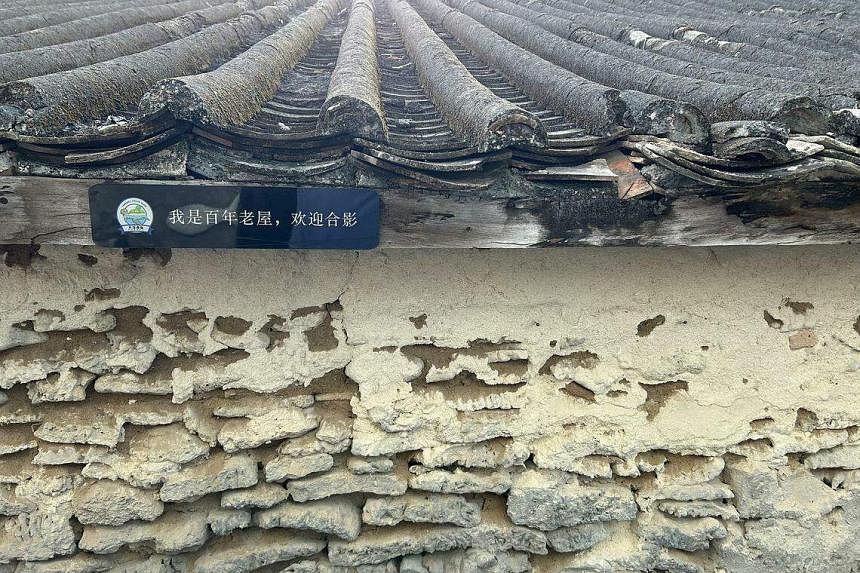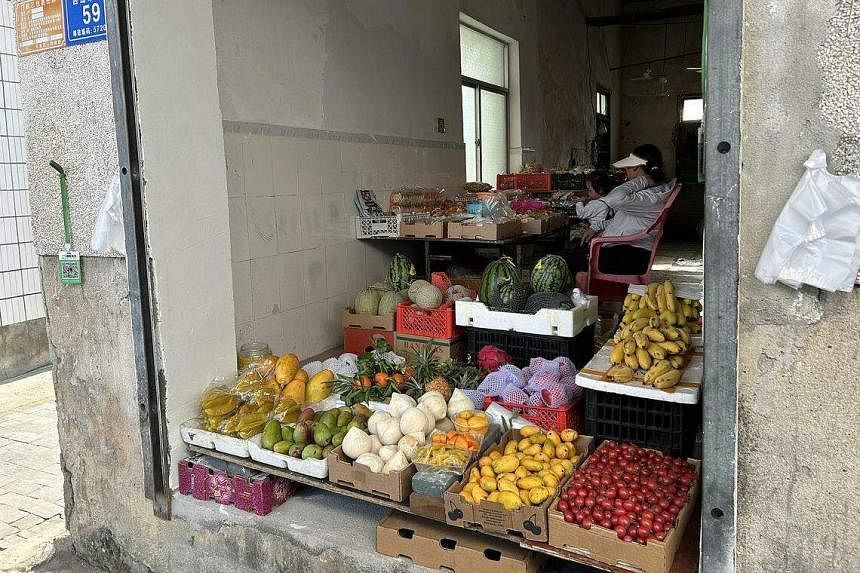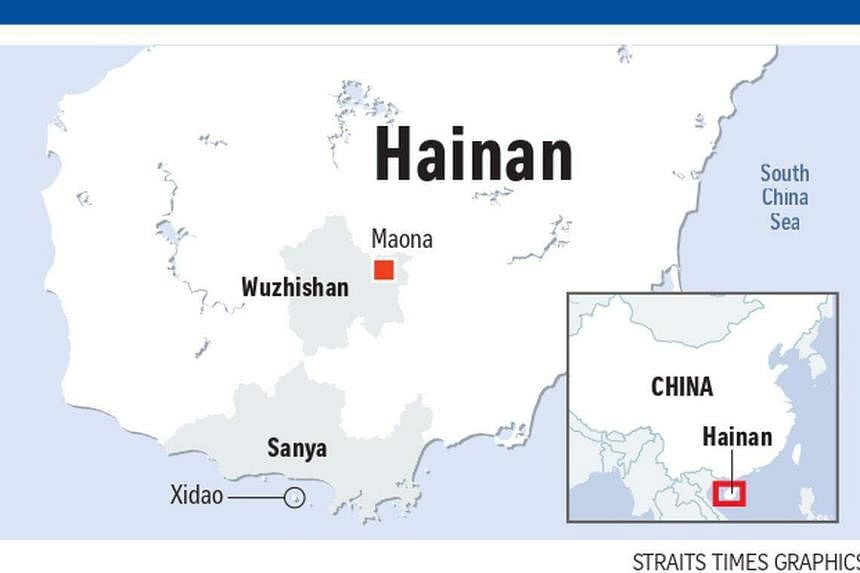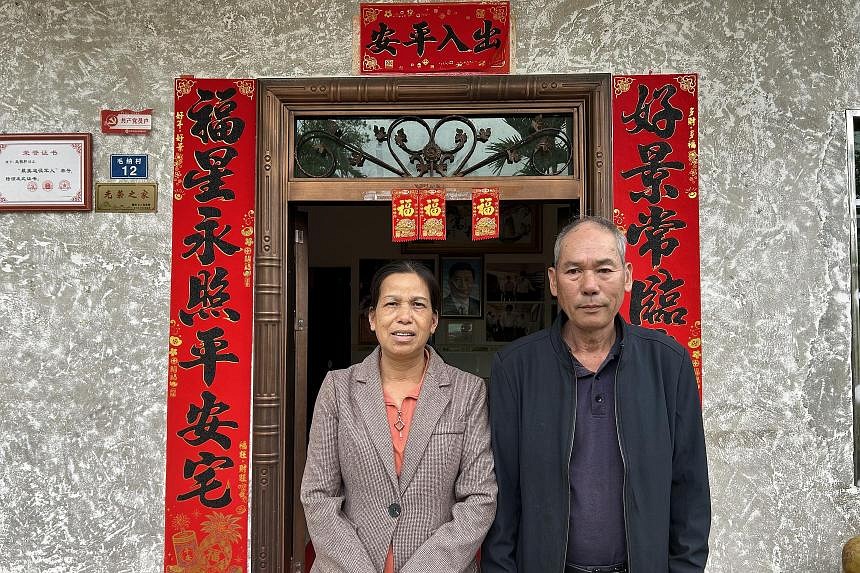WUZHISHAN, Hainan - Using better agriculture techniques helped tea farmer Wang Juru, 60, and her husband Wang Bohe, 59, at Maona village in Hainan province triple their annual income to 90,000 yuan (S$17,520) in 2022.
“In the past, we would lose entire harvests if there was a pest problem,” Mrs Wang, whose family owns about 16ha of land, told The Straits Times at her home.
“We used to try and solve the problem by having the tea plants farther from one another, which resulted in a waste of land.
“Now, with advice from experts who surveyed our soil and tea on how to use fertilisers and other chemicals to grow the plants better, we can have the crops closer together,” she said, referring to visiting researchers sent by the government to help villagers.
Maona, which President Xi Jinping visited in April 2022, has been a beneficiary of China’s national rural revitalisation drive, a catch-all term to describe ongoing efforts to modernise villages, from improving seed technology to boosting tourism services.
Mrs Wang said she is currently learning how to improve her tea drying process.
Officials have identified 160 key counties to receive help in transformation efforts and to make sure that villagers do not return to poverty. The drive is also an important thrust in China’s current development phase, which aims to boost rural residents’ income to narrow the widening wealth gap in the country.
Urban residents earn about 2½ times more than villagers, who made up two-fifths of China’s 1.4 billion population in 2021.
The government has pledged 175 billion yuan (S$34 billion) for upgrading villages this year – 10 billion yuan more than in 2022 – according to the Finance Ministry’s draft budget for 2023 released on Sunday.
Maona’s move to modernise its services since 2017 has primarily been focused on its tea, which has relied on the fame of Hainan’s tallest peak Wuzhishan – known for having some of China’s best air and water – to boost sales, according to local officials.
The average income of each villager hit 16,750 yuan in 2022, up from the 6,359 yuan in 2013. But the village of 128 residents, who belong to the Li tribe, an ethnic minority in China, will be banking on tourism for its next phase of development.
“We will be going all out in 2023 to bring in tourism and improve the quality and production of tea made here,” said Mr Zhu Honglin, 44, party secretary of Wuzhishan city.
Maona’s community building, built in 2017, is being torn down and upgraded to better showcase Li customs, including its cultural dances and long-table banquets, to future tourists. Plans are also under way to build the village’s first bed and breakfast and campsite.
Huts have been built along palm-fringed ponds, their shelves waiting to be stocked with local specialities for sale. Shops have also been set up along the path near the village’s entrance to sell Li pottery and clothing, as well as Wuzhishan tea.

One way that the government has been trying to raise the profile of Maona is through better access and the promotion of sports and recreational tourism at Wuzhishan, where tourists can cycle and take part in white-water sports.
New mountain roads have halved the time to Wuzhishan from Hainan’s provincial capital Haikou and the tourist hot spot Sanya in recent years, with the journey taking between four and six hours now, said Mr Zhu. Along the way to Wuzhishan, tour guides would warn passengers of winding roads and offer them motion sickness patches.
The city government is also using social media, including TikTok, to reach out to more international tourists.
“The pandemic hampered our international outreach, which we hope to correct this year, to show people all over the world that there’s much to do at Wuzhishan, such as white-water sports, hiking and cycling. Hopefully, they can also be drawn to Maona village to learn more about the Li’s traditional culture,” Mr Zhu said.

The early signs, in terms of domestic travellers, are promising. Over Chinese New Year, Wuzhishan received triple the number of visitors from a year ago, and tourist spending rose four times in the same period, Mr Zhu said. One big factor has been Mr Xi’s 2022 visit, he added.
But not everyone is excited about the upcoming changes.
“Some villagers don’t get why we need to make sure the tea quality is standardised across the village, or to be better hosts to tourists so that they will return for more visits,” said Mr Gao Li, 43, the party official in charge of Maona’s rural revitalisation drive.
“The villagers have been subsistence farmers for generations, working and selling enough to make ends meet. They don’t see the need to do more. We have been holding meetings frequently to educate the villagers about the benefits of stepping up our tourism services.”
The challenges of convincing sceptical villagers of the benefits of rural revitalisation is something that Xidao party secretary Li Qingxue knows a thing or two about.
The island, 15 minutes by ferry from Sanya, was fully opened to tourists in 2017 – the year China officially embarked on its drive to modernise villages.

Previously, the residential part of the 2.68 sq km island – home to about 4,000 residents who were mostly fishermen – was off-limits to tourists.
Village officials and employees of private companies hoping to set up shop on Xidao had to go door to door to convince residents of the merits of opening up the island to tourists.
The locals were unconvinced that their homes, built using stacks of coral, were special and could be rented out to visitors who want to experience life on the island, Mr Li added.
But the government eventually got the villagers’ buy-in and spent a year converting homes and other parts of the residential area into tourist attractions.

The villagers also underwent training for about a year, learning how to ride electric scooters, set up bed and breakfast establishments, and cook for visitors.
A cooperative to invest and help with other entrepreneurs who want to set up shop on Xidao has also been set up, on the condition that villagers receive 30 per cent of the new business’ earnings.
In February, ST’s visit to Xidao during one of Hainan’s peak tourist seasons began with snaking queues at ferry terminals.
Visitors excitedly took photos at bars and shops facing the sea, with many cycling along paths by the shore. Customers also waited in line for coconut desserts and other local delicacies at a food street near the port.

Mr Zeng Qicai, 43, who converted his home at the beach into a bed and breakfast in 2018, remembers the terrible state that the residential zone used to be in. “There were only muddy roads, and we had rubbish stacked up everywhere. We would also dump our waste water into the sea,” he said. Roads are now well paved, and the government has set up a waste water management system. Rubbish from Xidao is transported to collection centres on the main island. He also had difficulties in making ends meet with the childcare centre he used to run with his wife.
But business is booming now at his bed and breakfast, said Mr Zeng. He declined to share how much he makes but said he is setting up two more outlets.
“I have full confidence that our lives are only going to get better,” he said. “Villagers are also getting more excited about coming up with plans for what we can do to improve footfall.
“The more tourists we get, the better it is for villagers, who can sometimes just make money by opening up a stall selling water right at their doorstep.”



